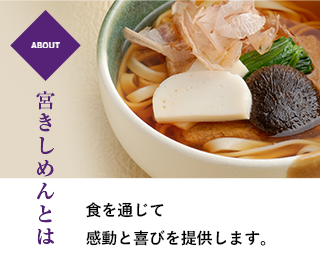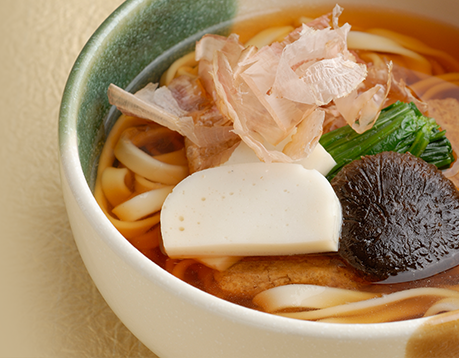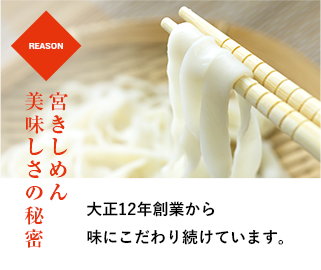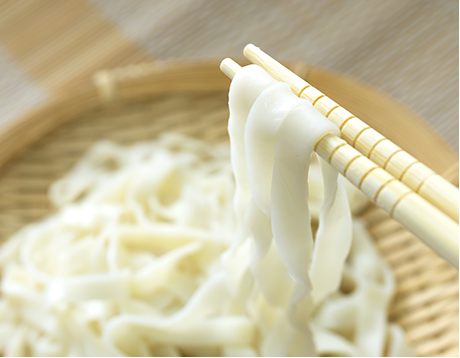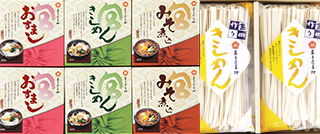- 日本語
- English
The origin of noodles & Kishimen
The origin of dishes originates some 4,000 years ago in China.
From within earthenware remains dating to the Neolithic (New Stone Age) period discovered in the upper Yellow River region of northwestern China,noodle-shaped remains have been found.

Approximately 3㎜ in diameter, this millet (graminae) was detemined by radiocarbon dating to be roughly 4,000 years old.
Although the origin of the noodle had been debated for a long time to originate in Italy, the Middle East, or China, clearly this finding indicates the origin of the noodle to be in China.
Thereafter noodles have been made into chopstick-shaped from to be torn apart and kneaded and made by one's finger into a shape resembling stone pieces used in the Japanese game Go. Noodles have also been dried in the sun as preserved food.
After being boiled, noodles were eaten by adding a soup stock.
Noodles were introduced to Japan around the biginning of the 14 century.
In the year 1350 (Muromachi period), within the Teikin-ourai, a document serving as both a dictionary and recipe book, was introduced a recipe for noodles.
This recipe instructs to strech kneaded flour and next use the flat, border edge of a cut bamboo pole to press and cut Go game-shaped pieces, which are then boilded and served with soybean flour.

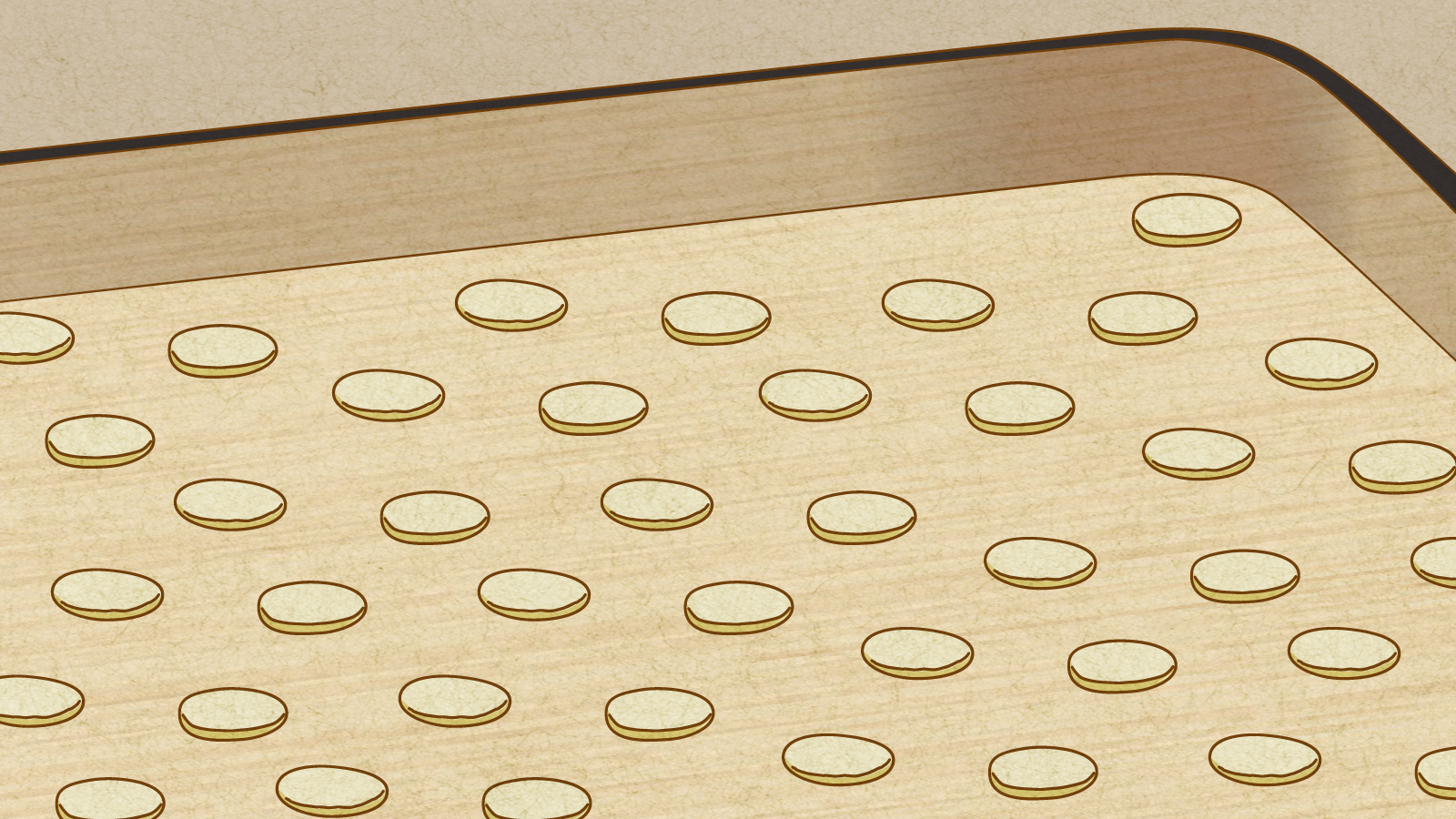


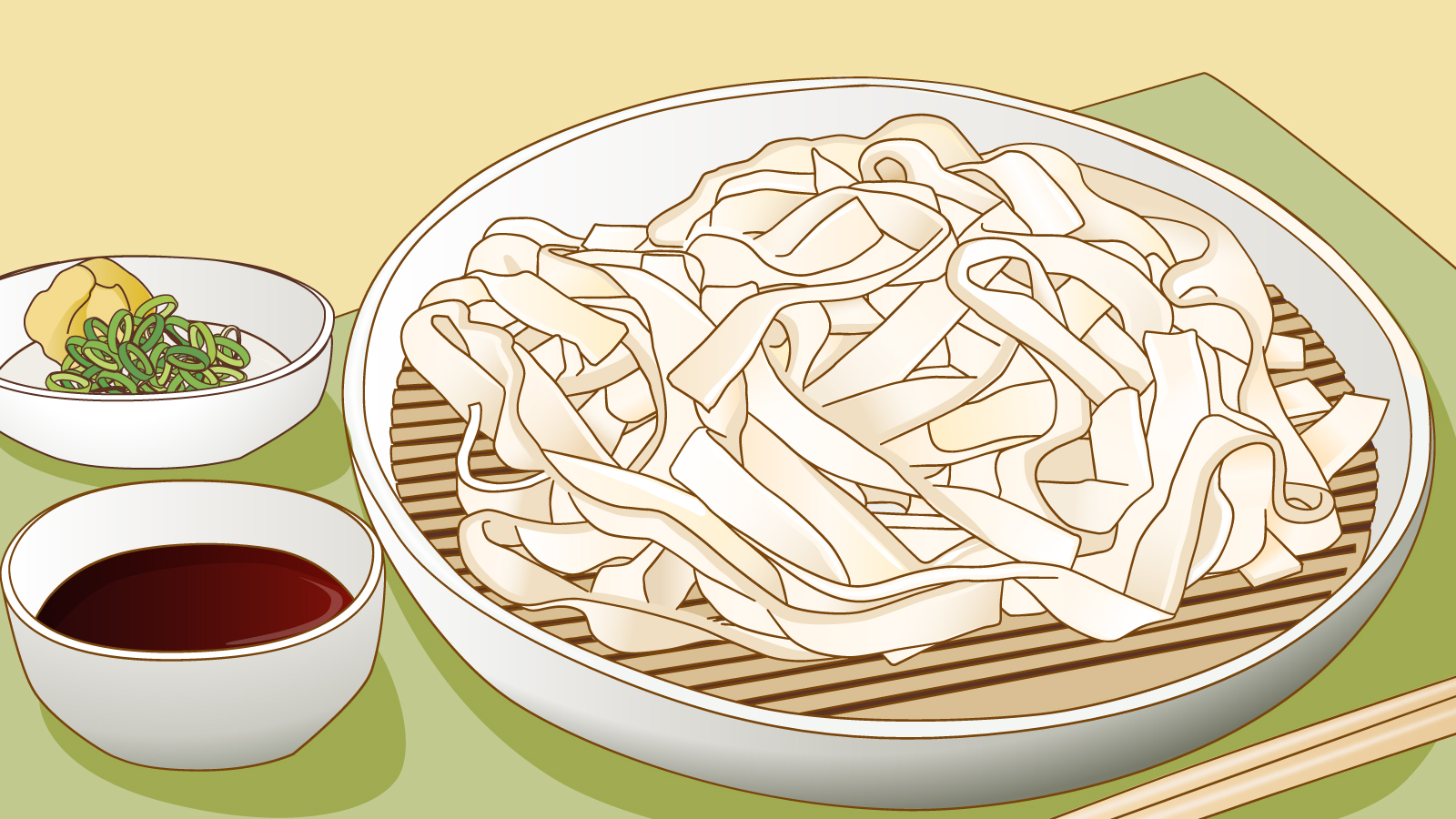
The name Kishimen as a type of noodle became recognized in the 1700s during the Edo period. Among a 1728 collection of haiku entitled "Futaebukuro" is the haiku, "Even if hidden / A fragrance unique to Kishimen.
Although each region of Japan has a food culture of flat-shaped noodles,uniquely characteristic to the Owari and Mikawa districts in the vicinity of Nagoya are these noodles possessing a name as a proper noun - Kishimen.
In around the year 1800, Kishimen noodles became widely served with spices and ingredients over the noodles.
The characteristics of Kishimen
The reason flat noodles became preferred can be tied to the frugal nature characteristic of people from the area of Nagoya.
Aligning with such frugalness is said to be the time saved in boiling these noodles.
This view, however, may be considered actually a strained interpretation through the ages, whereby more significant is resemblance of the difference in characteristics of this noodle, rather than noodle shape.
Concidered specifically characteristic to the central region of Japan is a preference for flat noodles allowing for sufficient savoring of the noodles with a dipping sauce comprising such as rich tasting miso and soy sauce.

The name of "Miya-kishimen" 
Miya Kishimen was established in 1923.
The Japanese character 宮 (miya), as the name used for shrine in Japanese, was presented by the chief priest of Atsuta Shrine, or Guji-sama, who placed this Japanese character ![]() (miya) before with the noodle name Kishimen, whereby the name of our company, Miya Kishimen, was created.
(miya) before with the noodle name Kishimen, whereby the name of our company, Miya Kishimen, was created.
Atsuta Shrine
Within Atsuta Shrine are the Three Sacred Treasures -- a mirror, sword, and ancient Japanese ornamental stone. These Three Sacred Treasures are inherited successively as a symbol of the emperor. Among these Tree Sacred Treasures within Atsuta Shrine, the origin of the sword (Kusanagi no tsurugi ; grass mowing sord) can be traced from before over 1900 years ago
According to legend, when the prince Susanoo no mikoto slayed the eight-tailed serpent Yamata no Orochi, from the serpent's tail fell the devine sword, the Ame-no-Murakumo no Tsurugi
Yamatotakeru no Mikoto (Prince Yamatotakeru) took this sword and mowed down the grass in the area of modern day Yaizu City (Shizuoka prefecture), and in eradicating bandits, this sword came to be called Kusanagi no Tsurugi
Upon Yamatotakeru no Mikoto falling ill and dying. Miyazu Hime (Princess Miyazu) constructed a yashiro (shrine) on the site of Atsuta.
The enshrining of this divine sword is the origin of Atsuta shrine in AD113

©2024 MIYA SHOJI CO., LTD.



















